It’s that time of the year again — some random summer day when I decide to publish my offseason standings predictions.
These are always a hit, even if they are a miss. For the record, this is my third annual attempt at making offseason predictions and I’ve correctly picked 24 of the 32 playoff teams over the last two years. That equates to a 75 per cent success ratio — as in three out of four, six out of eight or 12 out of 16.
The latter figures hold the most significance since 16 teams make the NHL playoffs every spring, meaning I’ve been wrong about four teams on average or two per conference per year. Not too shabby.
Last year wasn’t great, getting just 11 of 16 playoff teams right for the 2016-17 campaign. My five misses included Dallas and Los Angeles in the West, Tampa Bay, Florida and the New York Islanders in the East; replaced by Anaheim and Calgary in the West, the New York Rangers, Boston and Toronto in the East.
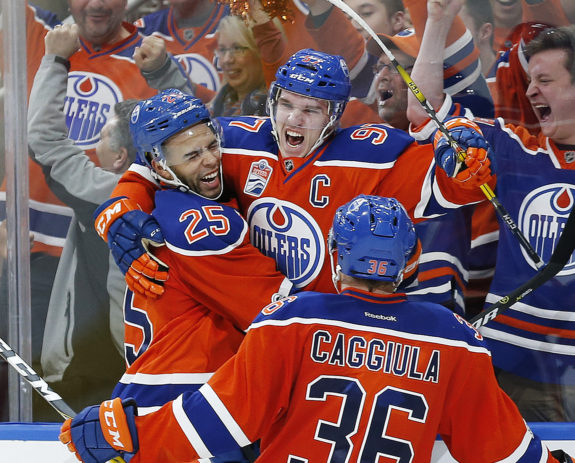
I was accused of being a “homer” for predicting the Oilers would make the playoffs this past season (I was right), and I’m even higher on Edmonton for 2017-18.
Going back to 2015-16 and my first kick at the can, I got 13 of 16 right — missing on Calgary in the West, Montreal and Columbus in the East; replaced by San Jose in the West, Philadelphia and Detroit in the East.
Now, looking ahead to 2017-18, the goal is to get back to that benchmark and perhaps raise the bar while redeeming myself for last year’s mediocre showing. It won’t be easy, though, with the salary cap ensuring that parity remains prevalent despite a repeat champion for the first time in two decades.
Sure, the Pittsburgh Penguins have a realistic shot at the three-peat, but when training camps open in mid-September, the vast majority of the league’s 31 teams will have legitimate playoff aspirations.
Here's your too early odds for NHL 2018 Stanley Cup pic.twitter.com/DhHcc4KjHT
— Off The Books (@OffThe_Books) July 16, 2017
Separating the contenders from the pretenders, with so little separation between them, is as challenging as it’s ever been, but somebody’s got to do it. That makes this practice all the more fun, with the ensuing debates to be all the more heated.
It’s inevitable that several fan bases will be up in arms over missing my playoff cut — 15 teams won’t make it, even if 10 (or more) of them enter the season with that expectation.
I tested the waters already with a three-part series that categorized the teams as trending up, trending down and staying the course. Those opinions were relatively well received, outside of Philadelphia — where Flyers fans were fuming over appearing on the trending down list, especially after recently being ranked by THW as boasting the league’s best farm system.
Yes, the Flyers will trend up sooner than later thanks to their impressive prospect pool, but staying the course might have been more appropriate for the season at hand. More on that later.
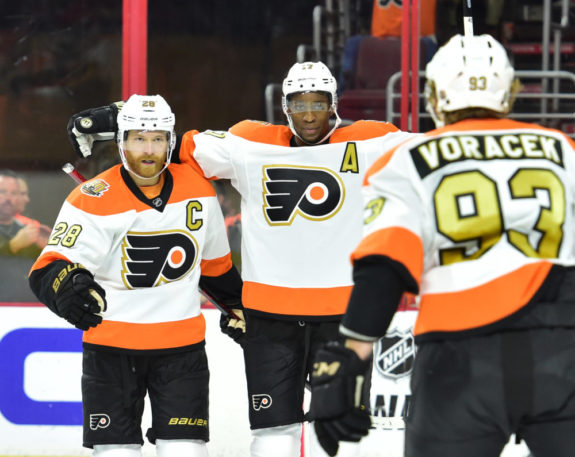
Can the forward trio of Claude Giroux, Wayne Simmonds and Jakub Voracek lead the Philadelphia Flyers back to the playoffs this season? Wait and see.
For those new to my predictions, I put these out three times over the hockey year — in the offseason (following the free-agent frenzy), in the preseason (publishing on the opening day of the regular season) and, lastly, at the midseason mark (once every team has played 40 games).
Three different predictions for every season and, yes, there are often discrepancies — even from the offseason to the preseason. Whether that is the result of additional trades or free-agent signings, injuries in training camp and exhibition games, or occasionally fan bases can convince me between now and October that I’m underestimating their team.
The Philly faithful are twisting my arm the hardest so far — no spoiler here — but there’s still a couple months to make your voice heard.
As of today, this is how I see the 2017-18 NHL season playing out. I’ll start by throwing it out all out there — my division standings, conference playoff matchups and draft lottery order — then I’ll circle back to provide analysis and reasoning for each team before concluding with a Stanley Cup prediction.
Here goes nothing (again) . . .
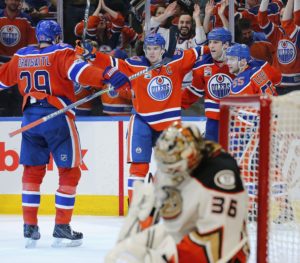
John Gibson and the Anaheim Ducks got the better of Connor McDavid and the Edmonton Oilers in this year’s playoffs — with a little help from the refs — but 2018 could produce a difference outcome, in the regular season as well as the playoffs.
Pacific Division
1) Edmonton Oilers
2) Anaheim Ducks
3) Calgary Flames
4) San Jose Sharks
5) Los Angeles Kings
6) Arizona Coyotes
7) Vancouver Canucks
8) Vegas Golden Knights
Central Division
1) Dallas Stars
2) Nashville Predators
3) Chicago Blackhawks
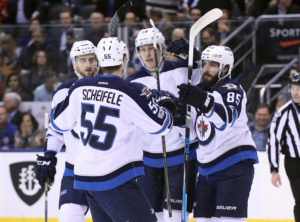
The Winnipeg Jets weren’t among the five Canadian teams to make this year’s playoffs, but they could be making a return to the postseason in 2018 if my predictions come to fruition.
4) Winnipeg Jets
5) Minnesota Wild
6) St. Louis Blues
7) Colorado Avalanche
Western Conference Playoff Matchups
P1) Edmonton vs. WC2) Winnipeg
C1) Dallas vs. WC1) San Jose
P2) Anaheim vs. P3) Calgary
C2) Nashville vs. C3) Chicago
Metropolitan Division

Can Sidney Crosby, Evgeni Malkin and the Pittsburgh Penguins make it three in a row? They opened as the Stanley Cup favourites again for 2018 and justifiably so.
1) Pittsburgh Penguins
2) Washington Capitals
3) Columbus Blue Jackets
4) New York Rangers
5) Carolina Hurricanes
6) Philadelphia Flyers
7) New York Islanders
8) New Jersey Devils
Atlantic Division
1) Tampa Bay Lightning
2) Toronto Maple Leafs
3) Montreal Canadiens
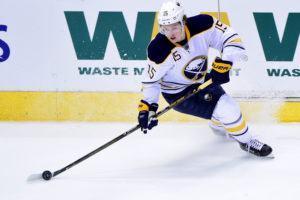
Is Jack Eichel capable of putting the Sabres on his shoulders and carrying Buffalo to a playoff berth in 2018? With help from Phil Housley, I believe that is within the realm of possibility.
4) Buffalo Sabres
5) Boston Bruins
6) Ottawa Senators
7) Florida Panthers
8) Detroit Red Wings
Eastern Conference Playoff Matchups
M1) Pittsburgh vs. WC2) N.Y. Rangers
A1) Tampa Bay vs. WC1) Buffalo
M2) Washington vs. M3) Columbus
A2) Toronto vs. A3) Montreal
Draft Lottery Order

Regardless of whether Matt Duchene and Gabriel Landeskog remain on the roster for the upcoming season, the Colorado Avalanche appear to be facing another uphill battle in 2018.
1) Colorado Avalanche
2) Detroit Red Wings
3) Vegas Golden Knights
4) Florida Panthers
5) New Jersey Devils
6) Vancouver Canucks
7) Arizona Coyotes
8) Ottawa Senators
9) New York Islanders
10) Philadelphia Flyers
11) Los Angeles Kings
12) St. Louis Blues
13) Boston Bruins
14) Carolina Hurricanes
15) Minnesota Wild
Pacific Division
1) Edmonton Oilers
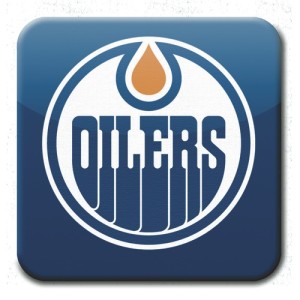 ANALYSIS: Trending up and now the team to beat in the Pacific. If not for a couple blown goaltender interference calls in this year’s playoffs, who knows how far the Oilers could have gone. Granted, almost everything went right for Edmonton in the regular season — most importantly, Connor McDavid staying healthy — but this team should only get better and benefit from that playoff experience. Todd McLellan’s system is firmly in place and the Oilers should hit the ground running this season, providing Leon Draisaitl is signed by opening night. If Cam Talbot stays strong in goal, Edmonton should hang be hanging a division banner from 2017-18, if not more.
ANALYSIS: Trending up and now the team to beat in the Pacific. If not for a couple blown goaltender interference calls in this year’s playoffs, who knows how far the Oilers could have gone. Granted, almost everything went right for Edmonton in the regular season — most importantly, Connor McDavid staying healthy — but this team should only get better and benefit from that playoff experience. Todd McLellan’s system is firmly in place and the Oilers should hit the ground running this season, providing Leon Draisaitl is signed by opening night. If Cam Talbot stays strong in goal, Edmonton should hang be hanging a division banner from 2017-18, if not more.
2) Anaheim Ducks
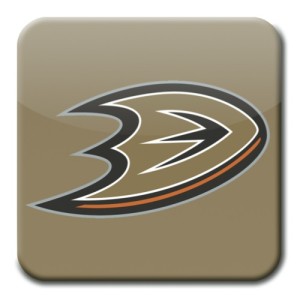 ANALYSIS: The Ducks will have something to say about that, returning their entire core after eliminating Edmonton from the second round of the playoffs and advancing to the Western Conference final. Anaheim proved me wrong all season, and Ryan Getzlaf showed he’s still a beast when it matters most. Corey Perry will be looking to bounce back after showing signs of life in the playoffs, and Ryan Kesler is good at what he does — as annoying as it might be. Having Hampus Lindholm and Rickard Rakell in the fold from the start of training camp, without any contract distractions, and having everybody accustomed to Randy Carlyle’s system again should make the Ducks that much more dangerous from Day 1. The goaltending tandem of John Gibson and Ryan Miller has the potential to be one of the league’s best too. Consider Anaheim a playoff lock and expect the Ducks to have home-ice advantage, at least for the first round.
ANALYSIS: The Ducks will have something to say about that, returning their entire core after eliminating Edmonton from the second round of the playoffs and advancing to the Western Conference final. Anaheim proved me wrong all season, and Ryan Getzlaf showed he’s still a beast when it matters most. Corey Perry will be looking to bounce back after showing signs of life in the playoffs, and Ryan Kesler is good at what he does — as annoying as it might be. Having Hampus Lindholm and Rickard Rakell in the fold from the start of training camp, without any contract distractions, and having everybody accustomed to Randy Carlyle’s system again should make the Ducks that much more dangerous from Day 1. The goaltending tandem of John Gibson and Ryan Miller has the potential to be one of the league’s best too. Consider Anaheim a playoff lock and expect the Ducks to have home-ice advantage, at least for the first round.
3) Calgary Flames
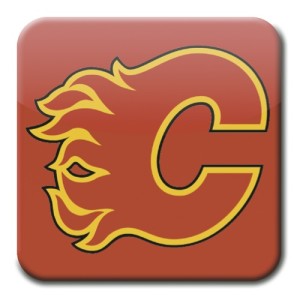 ANALYSIS: Also trending up after an impressive offseason to date that saw the Flames shore up their goaltending — with Mike Smith and Eddie Lack, an improvement on Brian Elliott and Chad Johnson from last season — while bolstering their already stacked blue line with the trade acquisition of Travis Hamonic. There may still be no stopping the Oilers and facing the Ducks on the road in the first round remains a nightmare matchup for Calgary, but the Battle of Alberta shouldn’t be as one-sided this time around after Edmonton swept last season’s series. That provincial rivalry promises to be fierce, and the Flames should be able to hold their own with anybody in the West, but they will be in tough come the playoffs again. Improved on paper, no doubt, and the Flames should get off to a better start in their second season under Glen Gulutzan, but I just can’t see Calgary beating Edmonton or Anaheim in a seven-game series.
ANALYSIS: Also trending up after an impressive offseason to date that saw the Flames shore up their goaltending — with Mike Smith and Eddie Lack, an improvement on Brian Elliott and Chad Johnson from last season — while bolstering their already stacked blue line with the trade acquisition of Travis Hamonic. There may still be no stopping the Oilers and facing the Ducks on the road in the first round remains a nightmare matchup for Calgary, but the Battle of Alberta shouldn’t be as one-sided this time around after Edmonton swept last season’s series. That provincial rivalry promises to be fierce, and the Flames should be able to hold their own with anybody in the West, but they will be in tough come the playoffs again. Improved on paper, no doubt, and the Flames should get off to a better start in their second season under Glen Gulutzan, but I just can’t see Calgary beating Edmonton or Anaheim in a seven-game series.
4) San Jose Sharks
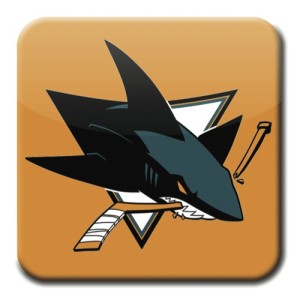 ANALYSIS: The Sharks won’t be the same without Patrick Marleau, but this is still a deep and talented team at forward and on defence, backstopped by average goaltending. Joe Thornton may lose another step coming off knee surgery and Brent Burns can’t get much better than last season, but there are also several Sharks with room for improvement — including Tomas Hertl, Mikkel Boedker, Joonas Donskoi and sophomore Timo Meier. Jannik Hansen should be a good fit in his first full season with San Jose too, so the Sharks stand a very good chance of making the playoffs again. The order of the top four in the Pacific could certainly be shuffled, but those would appear to be the playoff-bound teams again. Yes, the same four as last season — the only difference is that the Alberta teams leapfrog the California teams, Edmonton over Anaheim and Calgary over San Jose.
ANALYSIS: The Sharks won’t be the same without Patrick Marleau, but this is still a deep and talented team at forward and on defence, backstopped by average goaltending. Joe Thornton may lose another step coming off knee surgery and Brent Burns can’t get much better than last season, but there are also several Sharks with room for improvement — including Tomas Hertl, Mikkel Boedker, Joonas Donskoi and sophomore Timo Meier. Jannik Hansen should be a good fit in his first full season with San Jose too, so the Sharks stand a very good chance of making the playoffs again. The order of the top four in the Pacific could certainly be shuffled, but those would appear to be the playoff-bound teams again. Yes, the same four as last season — the only difference is that the Alberta teams leapfrog the California teams, Edmonton over Anaheim and Calgary over San Jose.
5) Los Angeles Kings
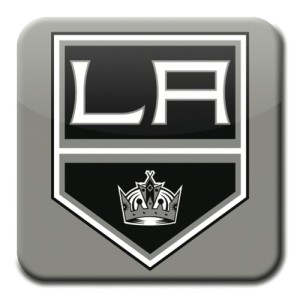 ANALYSIS: Another year on the outside looking in and probably the last year that the Kings finish ahead of the Coyotes, with Los Angeles eventually trending down due to an aging core and depleted prospect pool. Anze Kopitar should bounce back offensively now that he’s used to the burden of captaincy, Drew Doughty will continue to be Drew Doughty, and if Jonathan Quick can avoid another groin injury, then the Kings should stay competitive. That 70s Line will need to carry the offence if Marian Gaborik, Mike Cammalleri and Dustin Brown keep declining. Those three, in addition to Kopitar and defenceman Jake Muzzin, will ultimately determine L.A.’s fate. Most of them would have to rebound to their prime form for the Kings to make the playoffs and I just can’t see that happening. So, another year older and another year closer to a full-on rebuild.
ANALYSIS: Another year on the outside looking in and probably the last year that the Kings finish ahead of the Coyotes, with Los Angeles eventually trending down due to an aging core and depleted prospect pool. Anze Kopitar should bounce back offensively now that he’s used to the burden of captaincy, Drew Doughty will continue to be Drew Doughty, and if Jonathan Quick can avoid another groin injury, then the Kings should stay competitive. That 70s Line will need to carry the offence if Marian Gaborik, Mike Cammalleri and Dustin Brown keep declining. Those three, in addition to Kopitar and defenceman Jake Muzzin, will ultimately determine L.A.’s fate. Most of them would have to rebound to their prime form for the Kings to make the playoffs and I just can’t see that happening. So, another year older and another year closer to a full-on rebuild.
6) Arizona Coyotes
 ANALYSIS: Another year closer to competitiveness, but although I had the Coyotes on my trending up list, I’m predicting they finish in the same spot within the Pacific standings as last season. I do have Arizona improving from third-worst overall to seventh worst, but it’s a modest improvement. Baby steps, if you will, with the following season (2018-19) shaping up to be a potential breakout. It will take time to adjust from Dave Tippett’s system to Rick Tocchet and this is still going to be a really young team, especially up front with half the forwards 22 or under. That includes Calder candidates Clayton Keller and Dylan Strome, sophomores Christian Dvorak, Brendan Perlini and Lawson Crouse, plus third-year players Max Domi and Anthony Duclair — both of whom struggled last season after shining as rookies. Derek Stepan will help show those kids the way and Niklas Hjalmarsson will be the perfect defence partner for new captain Oliver Ekman-Larsson, but the key here will be how much better, if any, Antti Raanta performs than Mike Smith the last couple seasons. Raanta is the wild card for Arizona and if he’s the next Cam Talbot, then the Coyotes might make more noise than I’m anticipating.
ANALYSIS: Another year closer to competitiveness, but although I had the Coyotes on my trending up list, I’m predicting they finish in the same spot within the Pacific standings as last season. I do have Arizona improving from third-worst overall to seventh worst, but it’s a modest improvement. Baby steps, if you will, with the following season (2018-19) shaping up to be a potential breakout. It will take time to adjust from Dave Tippett’s system to Rick Tocchet and this is still going to be a really young team, especially up front with half the forwards 22 or under. That includes Calder candidates Clayton Keller and Dylan Strome, sophomores Christian Dvorak, Brendan Perlini and Lawson Crouse, plus third-year players Max Domi and Anthony Duclair — both of whom struggled last season after shining as rookies. Derek Stepan will help show those kids the way and Niklas Hjalmarsson will be the perfect defence partner for new captain Oliver Ekman-Larsson, but the key here will be how much better, if any, Antti Raanta performs than Mike Smith the last couple seasons. Raanta is the wild card for Arizona and if he’s the next Cam Talbot, then the Coyotes might make more noise than I’m anticipating.
7) Vancouver Canucks
 ANALYSIS: Part of me wanted to rank the Canucks a spot or two higher. Truth be told, I’ve liked their off-season moves to date and I don’t think their roster, as a whole, is as bad as most believe. Goaltending is the big question mark here too, with Jacob Markstrom anointed Vancouver’s new No. 1 and Anders Nilsson brought in to push him. Neither have been a starter before, so that position has to be considered a weakness compared to the competition. I also liked the promotion of Travis Green as coach and I could see him getting more out of this group, especially the forwards. The defence is decent too, with the Canucks appearing fairly deep up front and on the back end. Call me crazy, but the more I look at their projected lineup, the more I think Vancouver is underrated right now, possibly even a playoff sleeper. However, I’m not willing to go that bold with my prediction — not with so much uncertainty in the crease. Instead, I’ll go with the consensus and predict another top-10 pick for the Canucks.
ANALYSIS: Part of me wanted to rank the Canucks a spot or two higher. Truth be told, I’ve liked their off-season moves to date and I don’t think their roster, as a whole, is as bad as most believe. Goaltending is the big question mark here too, with Jacob Markstrom anointed Vancouver’s new No. 1 and Anders Nilsson brought in to push him. Neither have been a starter before, so that position has to be considered a weakness compared to the competition. I also liked the promotion of Travis Green as coach and I could see him getting more out of this group, especially the forwards. The defence is decent too, with the Canucks appearing fairly deep up front and on the back end. Call me crazy, but the more I look at their projected lineup, the more I think Vancouver is underrated right now, possibly even a playoff sleeper. However, I’m not willing to go that bold with my prediction — not with so much uncertainty in the crease. Instead, I’ll go with the consensus and predict another top-10 pick for the Canucks.
8) Vegas Golden Knights
 ANALYSIS: This is something of a default ranking for the expansion club, but much like Vancouver, I could see Vegas exceeding all expectations. I wouldn’t bet on that happening, but I wouldn’t be surprised if the Golden Knights overachieved by expansion standards and wound up picking outside the top five again (without losing the lottery this time). Unlike Vancouver and Arizona, goaltending should be a strength for Vegas with Marc-Andre Fleury an above-average starter and Calvin Pickard a promising backup. Scoring will probably be hard to come by for the Golden Knights and who knows what to expect from Vadim Shipachyov in his North American debut, but some of the offence could come from the defence with Nate Schmidt, Colin Miller, Shea Theodore and Brayden McNabb all possessing upside as puck-movers. There will be growing pains as Gerard Gallant tries to get all these strangers on the same page, but if Fleury can steal some games early on, the Golden Knights might gain enough momentum to stay out of the basement — both in the division and the overall standings. Finishing at the bottom wouldn’t be a bad thing, though, with a couple franchise players available in next year’s entry draft. George McPhee will be well aware of that and will likely look to maximize his assets as a seller at the trade deadline — moving pending free agents James Neal and David Perron, among others, for futures (picks and prospects) that will result in folding on their inaugural season.
ANALYSIS: This is something of a default ranking for the expansion club, but much like Vancouver, I could see Vegas exceeding all expectations. I wouldn’t bet on that happening, but I wouldn’t be surprised if the Golden Knights overachieved by expansion standards and wound up picking outside the top five again (without losing the lottery this time). Unlike Vancouver and Arizona, goaltending should be a strength for Vegas with Marc-Andre Fleury an above-average starter and Calvin Pickard a promising backup. Scoring will probably be hard to come by for the Golden Knights and who knows what to expect from Vadim Shipachyov in his North American debut, but some of the offence could come from the defence with Nate Schmidt, Colin Miller, Shea Theodore and Brayden McNabb all possessing upside as puck-movers. There will be growing pains as Gerard Gallant tries to get all these strangers on the same page, but if Fleury can steal some games early on, the Golden Knights might gain enough momentum to stay out of the basement — both in the division and the overall standings. Finishing at the bottom wouldn’t be a bad thing, though, with a couple franchise players available in next year’s entry draft. George McPhee will be well aware of that and will likely look to maximize his assets as a seller at the trade deadline — moving pending free agents James Neal and David Perron, among others, for futures (picks and prospects) that will result in folding on their inaugural season.
Central Division
1) Dallas Stars
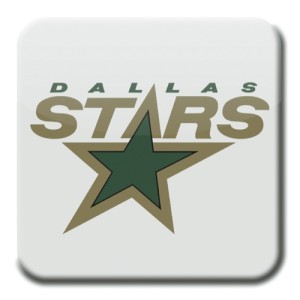 ANALYSIS: OK, enough playing it safe. Let’s go a bit bolder with the Central, starting with the Stars. Remember, Dallas won this division and topped the Western Conference standings two seasons ago before being derailed by injuries and inconsistent goaltending last season — shockingly missing the playoffs. The Stars solved the latter problem by landing Ben Bishop and upgraded an already potent offence by signing Alex Radulov. Jim Nill also made a shrewd move by acquiring Marc Methot from Vegas to pair with John Klingberg as a steadying force — the way he was for Erik Karlsson in Ottawa. Ken Hitchcock will instill more defensive structure in general and providing the team buys in, those adjustments should have the Stars shooting up the standings. With no obvious weaknesses or glaring holes in this lineup, the sky could be the limit for Dallas.
ANALYSIS: OK, enough playing it safe. Let’s go a bit bolder with the Central, starting with the Stars. Remember, Dallas won this division and topped the Western Conference standings two seasons ago before being derailed by injuries and inconsistent goaltending last season — shockingly missing the playoffs. The Stars solved the latter problem by landing Ben Bishop and upgraded an already potent offence by signing Alex Radulov. Jim Nill also made a shrewd move by acquiring Marc Methot from Vegas to pair with John Klingberg as a steadying force — the way he was for Erik Karlsson in Ottawa. Ken Hitchcock will instill more defensive structure in general and providing the team buys in, those adjustments should have the Stars shooting up the standings. With no obvious weaknesses or glaring holes in this lineup, the sky could be the limit for Dallas.
2) Nashville Predators
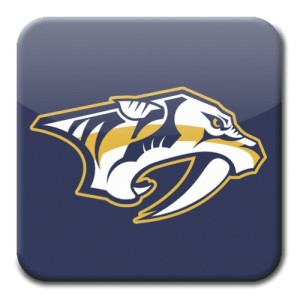 ANALYSIS: The Preds also underachieved, to some extent, this past regular season by squeaking into the playoffs before showing their true potential. That first-round sweep of Chicago was Nashville’s coming-out party and the Predators should now be considered legitimate contenders going forward. Nashville would seem to have more staying power than San Jose — a finalist the previous year, then bounced in the first round this spring — but nothing comes easy in the ultra-competitive Central. The Predators arguably boast the league’s best top four on defence and their budding top line of Ryan Johansen between Filip Forsberg and Viktor Arvidsson could become one of the NHL’s more potent trios too. Depth up front is still a bit of a concern, but several young lesser-knowns stepped up in the playoffs to provide optimism for the future. Pekka Rinne proved he’s still an upper-echelon netminder too, so Nashville has no real worries and should be a playoff lock this time around.
ANALYSIS: The Preds also underachieved, to some extent, this past regular season by squeaking into the playoffs before showing their true potential. That first-round sweep of Chicago was Nashville’s coming-out party and the Predators should now be considered legitimate contenders going forward. Nashville would seem to have more staying power than San Jose — a finalist the previous year, then bounced in the first round this spring — but nothing comes easy in the ultra-competitive Central. The Predators arguably boast the league’s best top four on defence and their budding top line of Ryan Johansen between Filip Forsberg and Viktor Arvidsson could become one of the NHL’s more potent trios too. Depth up front is still a bit of a concern, but several young lesser-knowns stepped up in the playoffs to provide optimism for the future. Pekka Rinne proved he’s still an upper-echelon netminder too, so Nashville has no real worries and should be a playoff lock this time around.
3) Chicago Blackhawks
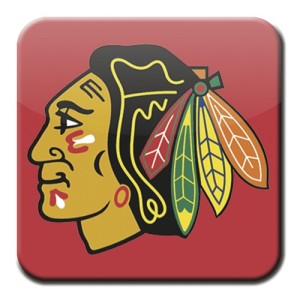 ANALYSIS: As mentioned in the trending down article, this near dynasty is likely done. Stan Bowman is trying to turn back time by bringing back Brandon Saad and Patrick Sharp, but Saad came at the expense of a superior talent in Artemi Panarin and Sharp will struggle to fill the void left by Marian Hossa. Niklas Hjalmarsson might be missed more than anybody, but top to bottom the Blackhawks aren’t as formidable as they once were. Chicago should still be a playoff team and might be capable of going on another run if some rookies or sophomores step up the way Nashville’s did this spring. That can’t be counted on and secondary scoring could be an issue for the Blackhawks even in the regular season. Chicago’s defence won’t be as good either, without Hjalmarsson, and Scott Darling is no longer there to spell Corey Crawford, who may end up getting overworked. Add it all up and the Blackhawks appear awfully vulnerable this season.
ANALYSIS: As mentioned in the trending down article, this near dynasty is likely done. Stan Bowman is trying to turn back time by bringing back Brandon Saad and Patrick Sharp, but Saad came at the expense of a superior talent in Artemi Panarin and Sharp will struggle to fill the void left by Marian Hossa. Niklas Hjalmarsson might be missed more than anybody, but top to bottom the Blackhawks aren’t as formidable as they once were. Chicago should still be a playoff team and might be capable of going on another run if some rookies or sophomores step up the way Nashville’s did this spring. That can’t be counted on and secondary scoring could be an issue for the Blackhawks even in the regular season. Chicago’s defence won’t be as good either, without Hjalmarsson, and Scott Darling is no longer there to spell Corey Crawford, who may end up getting overworked. Add it all up and the Blackhawks appear awfully vulnerable this season.
4) Winnipeg Jets
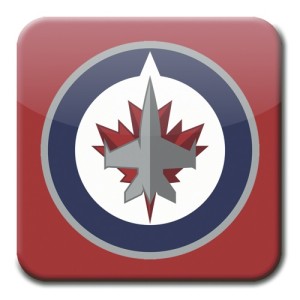 ANALYSIS: This is bold, one of my bolder predictions this year. I don’t like betting on a team backstopped by Steve Mason, but I feel as though Connor Hellebuyck is still going to emerge as Winnipeg’s No. 1 and enjoy a breakout season, becoming a key to the Jets’ success going forward. I originally had Winnipeg staying the course, making progress but missing the playoffs again. However, if the goaltending improves from last season, there is nothing else holding the Jets back. Their defence, one through six, is arguably top 10 in the league, and Winnipeg will have the ability to roll four scoring lines if Paul Maurice so desires. This is still a young team on the upswing, but Maurice and Kevin Cheveldayoff might need to make the postseason to stay in charge. I like their chances.
ANALYSIS: This is bold, one of my bolder predictions this year. I don’t like betting on a team backstopped by Steve Mason, but I feel as though Connor Hellebuyck is still going to emerge as Winnipeg’s No. 1 and enjoy a breakout season, becoming a key to the Jets’ success going forward. I originally had Winnipeg staying the course, making progress but missing the playoffs again. However, if the goaltending improves from last season, there is nothing else holding the Jets back. Their defence, one through six, is arguably top 10 in the league, and Winnipeg will have the ability to roll four scoring lines if Paul Maurice so desires. This is still a young team on the upswing, but Maurice and Kevin Cheveldayoff might need to make the postseason to stay in charge. I like their chances.
5) Minnesota Wild
 ANALYSIS: This team overachieved last season, by my estimation — thanks to the Bruce Boudreau factor. He’s one of the best regular-season coaches in history and his teams rarely miss the playoffs, then typically implode in the postseason. That’s neither here nor there, but the fact Devan Dubnyk tailed off in the second half of last season is a cause for concern. He needs to regain his Vezina-type form for Minnesota to repeat its success. The Wild are still comparable to the Jets in terms of forward and defence depth, but Winnipeg has more star power up front and a better third pairing on the blue line. If Hellebuyck and Mason can combine to match or outperform Dubnyk, that would definitely put the Jets over the top. But Boudreau is still the ace in the hole for Minnesota and his results speak for themselves in comparison to Maurice.
ANALYSIS: This team overachieved last season, by my estimation — thanks to the Bruce Boudreau factor. He’s one of the best regular-season coaches in history and his teams rarely miss the playoffs, then typically implode in the postseason. That’s neither here nor there, but the fact Devan Dubnyk tailed off in the second half of last season is a cause for concern. He needs to regain his Vezina-type form for Minnesota to repeat its success. The Wild are still comparable to the Jets in terms of forward and defence depth, but Winnipeg has more star power up front and a better third pairing on the blue line. If Hellebuyck and Mason can combine to match or outperform Dubnyk, that would definitely put the Jets over the top. But Boudreau is still the ace in the hole for Minnesota and his results speak for themselves in comparison to Maurice.
6) St. Louis Blues
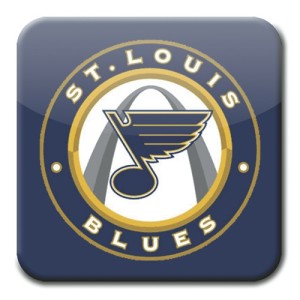 ANALYSIS: Unlike Dubnyk, Jake Allen turned it on in the second half and backstopped the Blues to a playoff berth before singlehandedly stealing that series against Minnesota by outduelling Dubnyk. Without Allen, that is a different outcome, but can he sustain that momentum for an entire 82-game season? I’m not convinced, but St. Louis is still going to be in the playoff mix again. I’m quite confident about the top three in this division, but the next three — Winnipeg, Minnesota and St. Louis — could finish in any order, and goaltending will certainly be among the deciding factors. I do think the Blues will miss Kevin Shattenkirk’s puck-moving ability over the course of the season, but their forwards should be every bit as productive with the addition of Brayden Schenn, the return of Robby Fabbri from injury, and the maturation of Ivan Barbashev, Dmitrij Jaskin and Magnus Paajarvi. Mike Yeo has lots of options up front now, but I’ve never been a big fan of his coaching, so it’ll be interesting to see how he fares in his first full season as St. Louis’ bench boss. Colton Parayko’s stock will continue to rise and I do like Joel Edmundson’s upside as well, but the Blues’ defensive depth will be tested if one of their top four go down to injury. Looking at those “next three,” I’m the least confident about St. Louis finding a way into the postseason.
ANALYSIS: Unlike Dubnyk, Jake Allen turned it on in the second half and backstopped the Blues to a playoff berth before singlehandedly stealing that series against Minnesota by outduelling Dubnyk. Without Allen, that is a different outcome, but can he sustain that momentum for an entire 82-game season? I’m not convinced, but St. Louis is still going to be in the playoff mix again. I’m quite confident about the top three in this division, but the next three — Winnipeg, Minnesota and St. Louis — could finish in any order, and goaltending will certainly be among the deciding factors. I do think the Blues will miss Kevin Shattenkirk’s puck-moving ability over the course of the season, but their forwards should be every bit as productive with the addition of Brayden Schenn, the return of Robby Fabbri from injury, and the maturation of Ivan Barbashev, Dmitrij Jaskin and Magnus Paajarvi. Mike Yeo has lots of options up front now, but I’ve never been a big fan of his coaching, so it’ll be interesting to see how he fares in his first full season as St. Louis’ bench boss. Colton Parayko’s stock will continue to rise and I do like Joel Edmundson’s upside as well, but the Blues’ defensive depth will be tested if one of their top four go down to injury. Looking at those “next three,” I’m the least confident about St. Louis finding a way into the postseason.
7) Colorado Avalanche
 ANALYSIS: The playoffs continue to be a pipe-dream for Colorado, with the Avs likely icing the league’s worst (or second-worst) defence — barring a big name coming back for Matt Duchene, should that deal get done before the season — while also getting below-average goaltending. The forwards should be fun to watch, especially if Nate MacKinnon finally breaks out, but this team is going to bleed scoring chances with little hope of stopping the opposition. Jared Bednar should fare a bit better with a full offseason to prepare, but Joe Sakic isn’t giving him much to work with again. Losing the draft lottery didn’t help either, but the Avs should be back in a position to win that — and only that — in 2018. On the bright side, Andrei Svechnikov and Rasmus Dahlin are both looking like franchise players entering their draft year. That is what Colorado really needs, with MacKinnon failing to live up to his hype as a No. 1 overall pick through four seasons to date.
ANALYSIS: The playoffs continue to be a pipe-dream for Colorado, with the Avs likely icing the league’s worst (or second-worst) defence — barring a big name coming back for Matt Duchene, should that deal get done before the season — while also getting below-average goaltending. The forwards should be fun to watch, especially if Nate MacKinnon finally breaks out, but this team is going to bleed scoring chances with little hope of stopping the opposition. Jared Bednar should fare a bit better with a full offseason to prepare, but Joe Sakic isn’t giving him much to work with again. Losing the draft lottery didn’t help either, but the Avs should be back in a position to win that — and only that — in 2018. On the bright side, Andrei Svechnikov and Rasmus Dahlin are both looking like franchise players entering their draft year. That is what Colorado really needs, with MacKinnon failing to live up to his hype as a No. 1 overall pick through four seasons to date.
Metropolitan Division
1) Pittsburgh Penguins
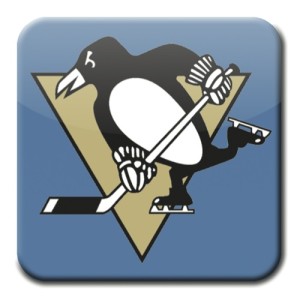 ANALYSIS: Sidney Crosby. Evgeni Malkin. Matt Murray. As long as the Penguins have these three players on their roster, they will continue to be contenders. A healthy Kris Letang is only going to help a team that won its second straight Stanley Cup despite a depleted defence. Pittsburgh does have some holes right now — especially down the middle behind Crosby and Malkin — and might miss Marc-Andre Fleury as Murray’s mentor and partner in goal, but the main pieces remain in place for a potential three-peat. Jim Rutherford has proven capable of finding the right fits to surround his core and Mike Sullivan evidently knows how to press the right buttons. Bottom line, this team knows how to win. In saying that, a division title won’t be top of mind and the Penguins may coast through the regular season, nursing their Cup hangover again, before flipping the switch for the playoffs. Don’t be surprised if Rutherford makes some more moves before the season, including a blockbuster or two. Phil Kessel could be on his way out of Pittsburgh by the sounds of it, and this is another potential landing spot for Matt Duchene. They wouldn’t be traded for each other, so we’re talking separate deals if that happens.
ANALYSIS: Sidney Crosby. Evgeni Malkin. Matt Murray. As long as the Penguins have these three players on their roster, they will continue to be contenders. A healthy Kris Letang is only going to help a team that won its second straight Stanley Cup despite a depleted defence. Pittsburgh does have some holes right now — especially down the middle behind Crosby and Malkin — and might miss Marc-Andre Fleury as Murray’s mentor and partner in goal, but the main pieces remain in place for a potential three-peat. Jim Rutherford has proven capable of finding the right fits to surround his core and Mike Sullivan evidently knows how to press the right buttons. Bottom line, this team knows how to win. In saying that, a division title won’t be top of mind and the Penguins may coast through the regular season, nursing their Cup hangover again, before flipping the switch for the playoffs. Don’t be surprised if Rutherford makes some more moves before the season, including a blockbuster or two. Phil Kessel could be on his way out of Pittsburgh by the sounds of it, and this is another potential landing spot for Matt Duchene. They wouldn’t be traded for each other, so we’re talking separate deals if that happens.
2) Washington Capitals
 ANALYSIS: Trending down after going all-in and failing to beat those pesky Penguins in the second round for the second year in a row, the Capitals lost half their playoff defence — trade-deadline ringer Kevin Shattenkirk and homegrown talents Karl Alzner and Nate Schmidt — plus top-six wingers Marcus Johansson and Justin Williams. Brian MacLellan did manage to retain T.J. Oshie while also locking up Evgeny Kuznetsov and Dmitry Orlov long-term. Like Pittsburgh, Washington still has four key cogs in Alex Ovechkin, Nicklas Backstrom, John Carlson and Braden Holtby. With them in the fold, a three-peat as division champs in the regular season is entirely possible — and a playoff berth shouldn’t be in doubt — but a third straight Presidents’ Trophy for topping the overall standings seems unlikely for Washington. That might be a good omen, to be less of a powerhouse over 82 games and not feel as much pressure to be playoff favourites. The Capitals are going to need some young legs to step up into big shoes on the blue line with three of Taylor Chorney, Aaron Ness, Christian Djoos and Madison Bowey (or perhaps Lucas Johansen or Connor Hobbs), projected to be on the opening-night roster. Fortunately for Washington, Holtby and Philipp Grubauer are among the league’s best goaltending tandems and will make up for some inevitable rookie mistakes in front of them.
ANALYSIS: Trending down after going all-in and failing to beat those pesky Penguins in the second round for the second year in a row, the Capitals lost half their playoff defence — trade-deadline ringer Kevin Shattenkirk and homegrown talents Karl Alzner and Nate Schmidt — plus top-six wingers Marcus Johansson and Justin Williams. Brian MacLellan did manage to retain T.J. Oshie while also locking up Evgeny Kuznetsov and Dmitry Orlov long-term. Like Pittsburgh, Washington still has four key cogs in Alex Ovechkin, Nicklas Backstrom, John Carlson and Braden Holtby. With them in the fold, a three-peat as division champs in the regular season is entirely possible — and a playoff berth shouldn’t be in doubt — but a third straight Presidents’ Trophy for topping the overall standings seems unlikely for Washington. That might be a good omen, to be less of a powerhouse over 82 games and not feel as much pressure to be playoff favourites. The Capitals are going to need some young legs to step up into big shoes on the blue line with three of Taylor Chorney, Aaron Ness, Christian Djoos and Madison Bowey (or perhaps Lucas Johansen or Connor Hobbs), projected to be on the opening-night roster. Fortunately for Washington, Holtby and Philipp Grubauer are among the league’s best goaltending tandems and will make up for some inevitable rookie mistakes in front of them.
3) Columbus Blue Jackets
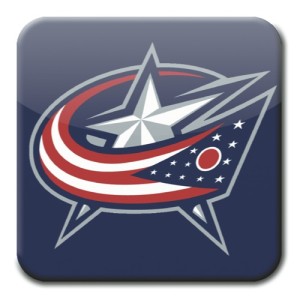 ANALYSIS: Disclaimer, the rest of this division is wide open — from three to seven, if not eight. Pittsburgh and Washington should be playoff locks again, but the rest of the Metro was the hardest to rank — even harder than the Central. That speaks to the competitiveness within the Metro, by far the league’s best division last season. Yet, here’s an unpopular opinion — I feel the Metro is overrated outside of the obvious top two, with these next six teams being somewhat mediocre or underwhelming on paper. The Blue Jackets were arguably the league’s biggest surprise last season — many had them pegged as a lottery team, yet they went on a 16-game winning streak and topped 100 points. Going back to my 2016 offseason predictions, I was one of the few who saw playoff potential in that roster, correctly predicting Columbus to finish third behind Washington and Pittsburgh (though I got talked out of that and turned the Blue Jackets into a lottery team for my preseason predictions). Everything went right for Columbus to make that a reality and the Blue Jackets could just as easily fall back to earth and miss the playoffs this season, especially if Sergei Bobrovsky were to get hurt. However, as long as Bobrovsky stays healthy, I like Columbus to stay third. The defence is solid and the forwards are decent, with plenty of upside. The Blue Jackets aren’t a playoff lock, but they seem like a strong bet this time around — a stronger bet than last year.
ANALYSIS: Disclaimer, the rest of this division is wide open — from three to seven, if not eight. Pittsburgh and Washington should be playoff locks again, but the rest of the Metro was the hardest to rank — even harder than the Central. That speaks to the competitiveness within the Metro, by far the league’s best division last season. Yet, here’s an unpopular opinion — I feel the Metro is overrated outside of the obvious top two, with these next six teams being somewhat mediocre or underwhelming on paper. The Blue Jackets were arguably the league’s biggest surprise last season — many had them pegged as a lottery team, yet they went on a 16-game winning streak and topped 100 points. Going back to my 2016 offseason predictions, I was one of the few who saw playoff potential in that roster, correctly predicting Columbus to finish third behind Washington and Pittsburgh (though I got talked out of that and turned the Blue Jackets into a lottery team for my preseason predictions). Everything went right for Columbus to make that a reality and the Blue Jackets could just as easily fall back to earth and miss the playoffs this season, especially if Sergei Bobrovsky were to get hurt. However, as long as Bobrovsky stays healthy, I like Columbus to stay third. The defence is solid and the forwards are decent, with plenty of upside. The Blue Jackets aren’t a playoff lock, but they seem like a strong bet this time around — a stronger bet than last year.
4) New York Rangers
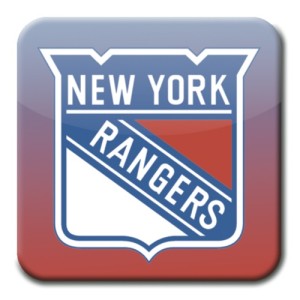 ANALYSIS: I wanted to shake things up here but, alas, I wound up going with the same four playoff teams from the Metro as last season. No shock value — nothing crazy, like predicting Columbus to make the postseason last year — but, as mentioned, any of the ensuing non-playoff teams could bump Columbus or the Rangers without much surprise. Ultimately, I gave the Rangers the benefit of the doubt based on having the best goalie of the bunch in Henrik Lundqvist and a much improved blue line with the additions of Kevin Shattenkirk, Brendan Smith and Anthony DeAngelo to complement Ryan McDonagh, Brady Skjei, Marc Staal and Nick Holden. Suddenly a strength, the Rangers’ defence will specialize in its puck-moving ability and quick transition. The forward group is still deep even without Derek Stepan and should continue to score by committee. This roster, as a whole, lacks the ‘wow’ factor of a true contender, but the Rangers should be in the playoff mix again. The coaching duo of Alain Vigneault and Lindy Ruff will help get those extra few points needed to make the cut.
ANALYSIS: I wanted to shake things up here but, alas, I wound up going with the same four playoff teams from the Metro as last season. No shock value — nothing crazy, like predicting Columbus to make the postseason last year — but, as mentioned, any of the ensuing non-playoff teams could bump Columbus or the Rangers without much surprise. Ultimately, I gave the Rangers the benefit of the doubt based on having the best goalie of the bunch in Henrik Lundqvist and a much improved blue line with the additions of Kevin Shattenkirk, Brendan Smith and Anthony DeAngelo to complement Ryan McDonagh, Brady Skjei, Marc Staal and Nick Holden. Suddenly a strength, the Rangers’ defence will specialize in its puck-moving ability and quick transition. The forward group is still deep even without Derek Stepan and should continue to score by committee. This roster, as a whole, lacks the ‘wow’ factor of a true contender, but the Rangers should be in the playoff mix again. The coaching duo of Alain Vigneault and Lindy Ruff will help get those extra few points needed to make the cut.
5) Carolina Hurricanes
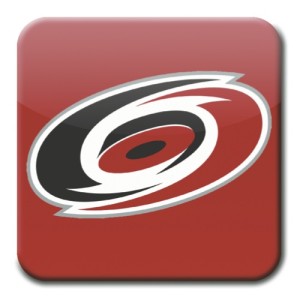 ANALYSIS: Trending up, with the potential to be this year’s Columbus, the Hurricanes will push for a playoff spot providing their goaltending is better than last season. That pressure will fall largely on the shoulders of Scott Darling, a first-time starter acquired from Chicago. Cam Ward is capable of platooning if need be, but if Carolina is going to take a significant step forward, it probably needs Darling to be the real deal as a No. 1. The rest of the roster features an all-American defence — Carolina’s top-five blueliners hail from the United States — and a very Scandinavian forward group, with four of the Hurricanes’ top six and at least six regulars hailing from Sweden or Finland. It’s an intriguing collection of talent and upside, but I’m not quite sold on Carolina as a playoff team. Some within the analytics community are predicting a breakout season for the Hurricanes but, like the Blue Jackets last season, almost everything would have to go right for that to happen. Possible, but not probable.
ANALYSIS: Trending up, with the potential to be this year’s Columbus, the Hurricanes will push for a playoff spot providing their goaltending is better than last season. That pressure will fall largely on the shoulders of Scott Darling, a first-time starter acquired from Chicago. Cam Ward is capable of platooning if need be, but if Carolina is going to take a significant step forward, it probably needs Darling to be the real deal as a No. 1. The rest of the roster features an all-American defence — Carolina’s top-five blueliners hail from the United States — and a very Scandinavian forward group, with four of the Hurricanes’ top six and at least six regulars hailing from Sweden or Finland. It’s an intriguing collection of talent and upside, but I’m not quite sold on Carolina as a playoff team. Some within the analytics community are predicting a breakout season for the Hurricanes but, like the Blue Jackets last season, almost everything would have to go right for that to happen. Possible, but not probable.
6) Philadelphia Flyers
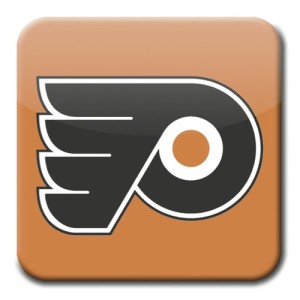 ANALYSIS: I still won’t be making any friends in Philly with this ranking, but all that complaining helped the Flyers appear at least one spot higher than I originally envisioned them. I call it complaining, but I consider it constructive criticism and I did take that feedback into account when finishing off my predictions. The way I see it, from the outside looking in, the Flyers rank outside the top 16 — outside the playoffs — in goaltending, defence, special teams and coaching. I’d rank their forwards inside the top 16 but not the top 10, so that just doesn’t add up to a post-season berth for me. I’m fully prepared to be proven wrong and to be raked over the coals as a result, but I’m sticking with my gut on this one and predicting a top-10 pick for Philadelphia in the 2018 entry draft.
ANALYSIS: I still won’t be making any friends in Philly with this ranking, but all that complaining helped the Flyers appear at least one spot higher than I originally envisioned them. I call it complaining, but I consider it constructive criticism and I did take that feedback into account when finishing off my predictions. The way I see it, from the outside looking in, the Flyers rank outside the top 16 — outside the playoffs — in goaltending, defence, special teams and coaching. I’d rank their forwards inside the top 16 but not the top 10, so that just doesn’t add up to a post-season berth for me. I’m fully prepared to be proven wrong and to be raked over the coals as a result, but I’m sticking with my gut on this one and predicting a top-10 pick for Philadelphia in the 2018 entry draft.
7) New York Islanders
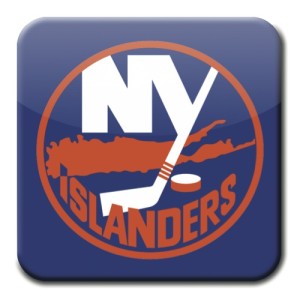 ANALYSIS: I feel like the Islanders are better than this ranking, but if they do finish this low, I doubt John Tavares sticks around past the trade deadline. He’s in a contract year and he wants to win a Stanley Cup, so if there is no sign of that happening any time soon in Brooklyn, Tavares will be looking to sign elsewhere and Garth Snow will be looking to get something significant in return. Of course, it could play out similar to Steven Stamkos in Tampa Bay, but that would probably require a playoff run and a career year for Tavares. It’s possible with Doug Weight and Scott Gomez sure to spark the offence from behind the bench, and Tavares likely to light it up on a potent top line with Anders Lee and Jordan Eberle. Depth up front is something of a concern, unless youngsters like Josh Ho-Sang, Anthony Beauvillier and Matt Barzal can become consistent secondary scorers. The defence won’t be as good as last season — with Travis Hamonic traded for futures — but should still be above average. The goaltending is average at best and a bit of a controversy, with Jaroslav Halak and Thomas Greiss battling to be the Islanders’ starter. I do like this former-player coaching staff — and I was never a fan of Jack Capuano — so I could totally see the Islanders bouncing back and finishing higher than I have them in the standings. However, I can’t see a playoff berth.
ANALYSIS: I feel like the Islanders are better than this ranking, but if they do finish this low, I doubt John Tavares sticks around past the trade deadline. He’s in a contract year and he wants to win a Stanley Cup, so if there is no sign of that happening any time soon in Brooklyn, Tavares will be looking to sign elsewhere and Garth Snow will be looking to get something significant in return. Of course, it could play out similar to Steven Stamkos in Tampa Bay, but that would probably require a playoff run and a career year for Tavares. It’s possible with Doug Weight and Scott Gomez sure to spark the offence from behind the bench, and Tavares likely to light it up on a potent top line with Anders Lee and Jordan Eberle. Depth up front is something of a concern, unless youngsters like Josh Ho-Sang, Anthony Beauvillier and Matt Barzal can become consistent secondary scorers. The defence won’t be as good as last season — with Travis Hamonic traded for futures — but should still be above average. The goaltending is average at best and a bit of a controversy, with Jaroslav Halak and Thomas Greiss battling to be the Islanders’ starter. I do like this former-player coaching staff — and I was never a fan of Jack Capuano — so I could totally see the Islanders bouncing back and finishing higher than I have them in the standings. However, I can’t see a playoff berth.
8) New Jersey Devils
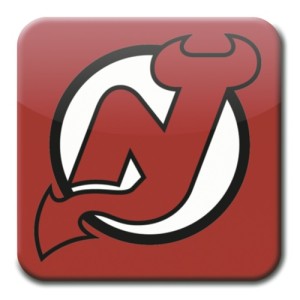 ANALYSIS: Trending up, but in baby steps for the Devils. Their defence is arguably the league’s worst — yes, even worse than Colorado’s on paper — but Cory Schneider is capable of bailing them out, providing he returns to form in goal after an ‘off’ year by his elite standards. The forwards are getting better and more exciting by the year — winning the lottery for Nico Hischier and also acquiring Marcus Johansson after adding Taylor Hall last summer — so Schneider should get more run support this season, but not enough to outscore the opposition on a regular basis. Ray Shero really needs to do something about that defence or the Devils won’t stand a chance at the playoffs again. As it stands, another top-five pick is probably in the cards — much to the chagrin of Hall. If the Devils don’t gain any traction this season, John Hynes will likely be fired sooner than later too — perhaps prior to Christmas.
ANALYSIS: Trending up, but in baby steps for the Devils. Their defence is arguably the league’s worst — yes, even worse than Colorado’s on paper — but Cory Schneider is capable of bailing them out, providing he returns to form in goal after an ‘off’ year by his elite standards. The forwards are getting better and more exciting by the year — winning the lottery for Nico Hischier and also acquiring Marcus Johansson after adding Taylor Hall last summer — so Schneider should get more run support this season, but not enough to outscore the opposition on a regular basis. Ray Shero really needs to do something about that defence or the Devils won’t stand a chance at the playoffs again. As it stands, another top-five pick is probably in the cards — much to the chagrin of Hall. If the Devils don’t gain any traction this season, John Hynes will likely be fired sooner than later too — perhaps prior to Christmas.
Atlantic Division
1) Tampa Bay Lightning
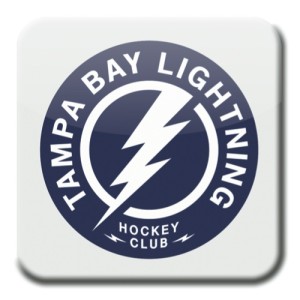 ANALYSIS: I’ve always liked the Lightning and I still see them as the team to beat in the Atlantic, assuming Steven Stamkos is fully healthy and up to speed for the start of the season. Steve Yzerman has done a masterful job of stickhandling around the salary cap and locking up his core long-term, so Tampa should be built to win for the foreseeable future. This is Andrei Vasilevskiy’s time to shine now that Ben Bishop is gone, and I believe the young Russian has Vezina potential as early as this season. Tampa’s offence will miss Jonathan Drouin, but a full season of Stamkos will more than offset that loss and we can expect more of the same from the Triplets. The defence does have some question marks, and it’ll be interesting to see whether Mikhail Sergachev — the return for Drouin — steps right in or marinates in the minors, but he seemingly has Norris potential too. If the Russians all perform to their potential — namely, Vasilevskiy, Sergachev and last season’s leading scorer Nikita Kucherov — the Lightning will absolutely be a playoff team again, if not the division champion.
ANALYSIS: I’ve always liked the Lightning and I still see them as the team to beat in the Atlantic, assuming Steven Stamkos is fully healthy and up to speed for the start of the season. Steve Yzerman has done a masterful job of stickhandling around the salary cap and locking up his core long-term, so Tampa should be built to win for the foreseeable future. This is Andrei Vasilevskiy’s time to shine now that Ben Bishop is gone, and I believe the young Russian has Vezina potential as early as this season. Tampa’s offence will miss Jonathan Drouin, but a full season of Stamkos will more than offset that loss and we can expect more of the same from the Triplets. The defence does have some question marks, and it’ll be interesting to see whether Mikhail Sergachev — the return for Drouin — steps right in or marinates in the minors, but he seemingly has Norris potential too. If the Russians all perform to their potential — namely, Vasilevskiy, Sergachev and last season’s leading scorer Nikita Kucherov — the Lightning will absolutely be a playoff team again, if not the division champion.
2) Toronto Maple Leafs
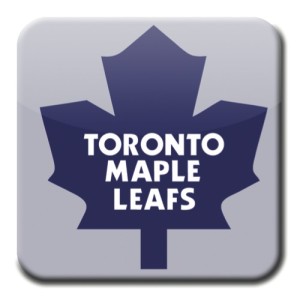 ANALYSIS: Obviously trending up, even if they overachieved to some degree last season, the Leafs are going to be a perennial playoff team going forward. Mike Babcock will make sure of that and he won’t be content with just making the postseason, now that Toronto has got a taste of it. The bar is being raised, but this roster should be capable of living up to increased expectations. That is still putting a lot of pressure on sophomores like Auston Matthews, Mitch Marner, William Nylander and Nikita Zaitsev, but the real key will continue to be Frederik Andersen in goal. He needs to stay healthy because the depth at that positon is concerning, with Curtis McElhinney a mediocre at best backup. If Andersen goes down long-term — and he does have a history of injuries — the Leafs may go down with him. Otherwise, Toronto should keep rising up and be more of a threat come playoffs.
ANALYSIS: Obviously trending up, even if they overachieved to some degree last season, the Leafs are going to be a perennial playoff team going forward. Mike Babcock will make sure of that and he won’t be content with just making the postseason, now that Toronto has got a taste of it. The bar is being raised, but this roster should be capable of living up to increased expectations. That is still putting a lot of pressure on sophomores like Auston Matthews, Mitch Marner, William Nylander and Nikita Zaitsev, but the real key will continue to be Frederik Andersen in goal. He needs to stay healthy because the depth at that positon is concerning, with Curtis McElhinney a mediocre at best backup. If Andersen goes down long-term — and he does have a history of injuries — the Leafs may go down with him. Otherwise, Toronto should keep rising up and be more of a threat come playoffs.
3) Montreal Canadiens
 ANALYSIS: The defending division champion, I wouldn’t rule out Montreal repeating that feat. Gone are Alex Radulov, Andrei Markov and Nathan Beaulieu, replaced by some combination of Jonathan Drouin, Ales Hemsky, Karl Alzner, David Schlemko and Mark Streit. It is a lot of turnover, but Marc Bergevin is determined to make this team his own and isn’t shy about making controversial moves. Keeping Alex Galchenyuk, at least for now, seems like a smart decision — even if he’s not going to develop into the No. 1 centre that Montreal is missing. A full season of Claude Julien behind the bench, working extensively with Galchenyuk and Drouin, should be beneficial. As always, Montreal’s success hinges on Carey Price and his health, but if he holds up, the Canadiens will be a playoff team again.
ANALYSIS: The defending division champion, I wouldn’t rule out Montreal repeating that feat. Gone are Alex Radulov, Andrei Markov and Nathan Beaulieu, replaced by some combination of Jonathan Drouin, Ales Hemsky, Karl Alzner, David Schlemko and Mark Streit. It is a lot of turnover, but Marc Bergevin is determined to make this team his own and isn’t shy about making controversial moves. Keeping Alex Galchenyuk, at least for now, seems like a smart decision — even if he’s not going to develop into the No. 1 centre that Montreal is missing. A full season of Claude Julien behind the bench, working extensively with Galchenyuk and Drouin, should be beneficial. As always, Montreal’s success hinges on Carey Price and his health, but if he holds up, the Canadiens will be a playoff team again.
4) Buffalo Sabres
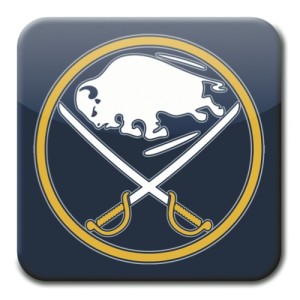 ANALYSIS: Finally, another bold one — my boldest of all, even bolder than Winnipeg. This is almost equivalent to my Columbus prediction from last year. I’m on the Buffalo bandwagon, for better or worse. After closely watching Connor McDavid’s impact on Edmonton’s turnaround last season, I believe Jack Eichel can carry the Sabres to a playoff berth in similar fashion this season. No, I don’t think Eichel is as skilled or as good of a leader as McDavid, but I feel he’s got the same drive to succeed — individually and as a team. You can tell that Eichel hates to lose. The hiring of Phil Housley was a home run for Buffalo, and I think he’ll be able to channel Eichel’s enthusiasm in the right direction and help him mature into one of the league’s elite stars. Jason Botterill has done a good job in his brief time as GM, shoring up the defence with the additions of Nathan Beaulieu, Marco Scandella and KHL free agent Viktor Antipin to play alongside Rasmus Ristolainen, Jake McCabe, Zach Bogosian and Josh Gorges. Housley will be hands-on with that group and should turn the position into a strength for the Sabres. The weakness — or, rather, the question mark — for Buffalo is still between the pipes with Robin Lehner. He signed a one-year extension that will determine his future fate in the organization, and the Sabres need Lehner to be above average, consistent and healthy for my prediction to come to fruition. I like Lehner, so I’m willing to bet on him, but I’m more so betting on Housley’s impact as head coach.
ANALYSIS: Finally, another bold one — my boldest of all, even bolder than Winnipeg. This is almost equivalent to my Columbus prediction from last year. I’m on the Buffalo bandwagon, for better or worse. After closely watching Connor McDavid’s impact on Edmonton’s turnaround last season, I believe Jack Eichel can carry the Sabres to a playoff berth in similar fashion this season. No, I don’t think Eichel is as skilled or as good of a leader as McDavid, but I feel he’s got the same drive to succeed — individually and as a team. You can tell that Eichel hates to lose. The hiring of Phil Housley was a home run for Buffalo, and I think he’ll be able to channel Eichel’s enthusiasm in the right direction and help him mature into one of the league’s elite stars. Jason Botterill has done a good job in his brief time as GM, shoring up the defence with the additions of Nathan Beaulieu, Marco Scandella and KHL free agent Viktor Antipin to play alongside Rasmus Ristolainen, Jake McCabe, Zach Bogosian and Josh Gorges. Housley will be hands-on with that group and should turn the position into a strength for the Sabres. The weakness — or, rather, the question mark — for Buffalo is still between the pipes with Robin Lehner. He signed a one-year extension that will determine his future fate in the organization, and the Sabres need Lehner to be above average, consistent and healthy for my prediction to come to fruition. I like Lehner, so I’m willing to bet on him, but I’m more so betting on Housley’s impact as head coach.
5) Boston Bruins
 ANALYSIS: I had the Bruins pegged as a lottery team last season — bringing up the rear in this division — but they exceeded my expectations and made the playoffs thanks to a career year from Brad Marchand, a breakout year from David Pastrnak and stellar goaltending from Tuukka Rask. Brandon Carlo was a pleasant surprise, helping stabilize a sketchy blue line that should be further bolstered this season by rookie Charlie McAvoy, though Boston lost Colin Miller in the expansion draft. This is another team that will be relying on a lot of youth, with some promising forward prospects appearing ready to debut this season. I think it’ll be a transition year with mixed results for the Bruins, missing the postseason but generating optimism for the future.
ANALYSIS: I had the Bruins pegged as a lottery team last season — bringing up the rear in this division — but they exceeded my expectations and made the playoffs thanks to a career year from Brad Marchand, a breakout year from David Pastrnak and stellar goaltending from Tuukka Rask. Brandon Carlo was a pleasant surprise, helping stabilize a sketchy blue line that should be further bolstered this season by rookie Charlie McAvoy, though Boston lost Colin Miller in the expansion draft. This is another team that will be relying on a lot of youth, with some promising forward prospects appearing ready to debut this season. I think it’ll be a transition year with mixed results for the Bruins, missing the postseason but generating optimism for the future.
6) Ottawa Senators
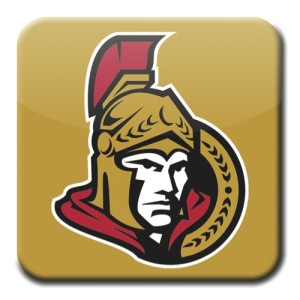 ANALYSIS: Kudos to Craig Anderson and Guy Boucher, but the Senators clearly overachieved last season. The advanced stats point to Ottawa as a team that could plummet this season and the eye test tells me the same. The goaltending can’t get any better, Erik Karlsson is probably going to miss Marc Methot at least initially, and opposing teams will have devised new game plans to counter Boucher’s system. That will likely result is less success for the Senators — in the regular season and obviously in the playoffs if they were to make it again. I see Ottawa as something of a one-hit wonder, but if rookies Colin White and Thomas Chabot can provide a significant boost, the Senators could sneak into the postseason again.
ANALYSIS: Kudos to Craig Anderson and Guy Boucher, but the Senators clearly overachieved last season. The advanced stats point to Ottawa as a team that could plummet this season and the eye test tells me the same. The goaltending can’t get any better, Erik Karlsson is probably going to miss Marc Methot at least initially, and opposing teams will have devised new game plans to counter Boucher’s system. That will likely result is less success for the Senators — in the regular season and obviously in the playoffs if they were to make it again. I see Ottawa as something of a one-hit wonder, but if rookies Colin White and Thomas Chabot can provide a significant boost, the Senators could sneak into the postseason again.
7) Florida Panthers
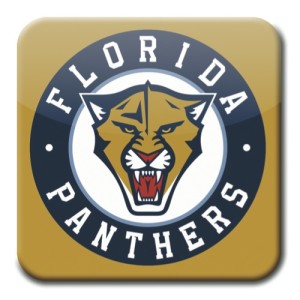 ANALYSIS: Dale Tallon is back in charge — a move I approve — but he let a lot of offence get away without replacing much of it this summer. Jaromir Jagr, Jonathan Marchessault, Reilly Smith, Jussi Jokinen and Thomas Vanek are gone from their top nine, with Radim Vrbata the only proven replacement. Evgeni Dadonov is returning from Russia and Henrik Haapala is coming over from Finland, but the Panthers will need the likes of Denis Malgin, Colton Sceviour and Jared McCann to step into bigger roles or for prospects like Owen Tippett and Jayce Hawryluk to make the jump. That’s asking a lot, on all fronts, but Florida should be healthier to start the season after missing Jonathan Huberdeau, Aleksander Barkov and Nick Bjugstad for large chunks of last season. Those three will be difference-makers offensively, along with Vincent Trocheck, but their supporting cast is weaker than most. Florida’s defence is solid — top 16 and arguably top 10 in the league — and the goaltending tandem of Roberto Luongo and James Reimer should be above average too. I’m not sure what to make of Bob Boughner as head coach, but I don’t see him as an offensive catalyst like Housley in Buffalo. I think the Panthers are going to struggle to score beyond their top line and that will be their demise. I don’t see Florida even flirting with a playoff spot. In fact, I foresee a top-five pick.
ANALYSIS: Dale Tallon is back in charge — a move I approve — but he let a lot of offence get away without replacing much of it this summer. Jaromir Jagr, Jonathan Marchessault, Reilly Smith, Jussi Jokinen and Thomas Vanek are gone from their top nine, with Radim Vrbata the only proven replacement. Evgeni Dadonov is returning from Russia and Henrik Haapala is coming over from Finland, but the Panthers will need the likes of Denis Malgin, Colton Sceviour and Jared McCann to step into bigger roles or for prospects like Owen Tippett and Jayce Hawryluk to make the jump. That’s asking a lot, on all fronts, but Florida should be healthier to start the season after missing Jonathan Huberdeau, Aleksander Barkov and Nick Bjugstad for large chunks of last season. Those three will be difference-makers offensively, along with Vincent Trocheck, but their supporting cast is weaker than most. Florida’s defence is solid — top 16 and arguably top 10 in the league — and the goaltending tandem of Roberto Luongo and James Reimer should be above average too. I’m not sure what to make of Bob Boughner as head coach, but I don’t see him as an offensive catalyst like Housley in Buffalo. I think the Panthers are going to struggle to score beyond their top line and that will be their demise. I don’t see Florida even flirting with a playoff spot. In fact, I foresee a top-five pick.
8) Detroit Red Wings
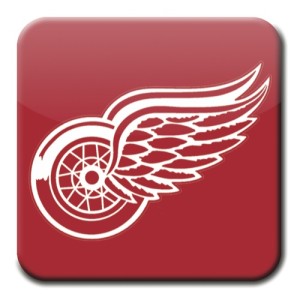 ANALYSIS: Speaking of top-five picks, Detroit is destined to be a lottery team as well. Ken Holland had an amazing run with the Red Wings — 25 straight years in the playoffs — but this team is trending down in a hurry. A couple decades ago, the Detroit-Colorado rivalry was as strong as any in the league, but now it appears the Red Wings and Avalanche could be competing for the first overall selection rather than the Stanley Cup in 2018. Detroit’s farm team in Grand Rapids did win the Calder Cup this year, but that next wave of talent isn’t going to take over just yet. The old guard is gone, aside from Henrik Zetterberg and Jimmy Howard, and the likes of Gustav Nyquist, Tomas Tatar and Petr Mrazek aren’t capable of carrying the team. So the Red Wings will likely need to go down — way down — before they go up again. Detroit would definitely welcome a top-two pick, be it the Russian sniper in Andrei Svechnikov (his older brother Evgeny is a Red Wings prospect) or the Swedish defender in Rasmus Dahlin, who reminds some of Red Wings great Nick Lidstrom. I also wonder whether Holland will make a coaching change at some point this season, bringing up Todd Nelson to replace Jeff Blashill. I’m a big fan of Nelson and think he could eventually return Detroit to prominence.
ANALYSIS: Speaking of top-five picks, Detroit is destined to be a lottery team as well. Ken Holland had an amazing run with the Red Wings — 25 straight years in the playoffs — but this team is trending down in a hurry. A couple decades ago, the Detroit-Colorado rivalry was as strong as any in the league, but now it appears the Red Wings and Avalanche could be competing for the first overall selection rather than the Stanley Cup in 2018. Detroit’s farm team in Grand Rapids did win the Calder Cup this year, but that next wave of talent isn’t going to take over just yet. The old guard is gone, aside from Henrik Zetterberg and Jimmy Howard, and the likes of Gustav Nyquist, Tomas Tatar and Petr Mrazek aren’t capable of carrying the team. So the Red Wings will likely need to go down — way down — before they go up again. Detroit would definitely welcome a top-two pick, be it the Russian sniper in Andrei Svechnikov (his older brother Evgeny is a Red Wings prospect) or the Swedish defender in Rasmus Dahlin, who reminds some of Red Wings great Nick Lidstrom. I also wonder whether Holland will make a coaching change at some point this season, bringing up Todd Nelson to replace Jeff Blashill. I’m a big fan of Nelson and think he could eventually return Detroit to prominence.
Stanley Cup Prediction
I’m going with Edmonton over Pittsburgh in an epic seven-game series, with Sidney Crosby unofficially passing the torch to Connor McDavid as the game’s best player and the face of the NHL. Or, rather, McDavid taking the torch from Crosby because the latter won’t relinquish it willingly.
McDavid wasn’t great in his playoff debut — outshined, at times, by teammate Leon Draisaitl — but McDavid will learn from that experience and be better, if not dominant the second time around. That might mean saving a little something extra for the playoffs — in terms of effort and energy — but I fully expect McDavid to lead the Oilers deeper into the postseason and possibly lift the Stanley Cup in his third year. That would be one better than Crosby, who lost in the final in his third season before hoisting the Cup in his fourth campaign.
I’m not overly confident in that prediction because I feel several teams could come on top in the 2017-18 season. I could also see Dallas over Montreal, Nashville over Washington, Tampa Bay over Anaheim, the Rangers over Chicago, the list goes on. That begs the question — who do you got? How do you see this season playing out?